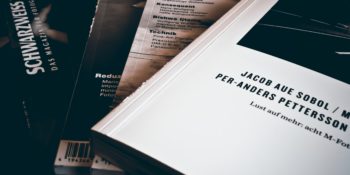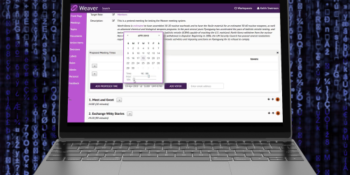Dynamic Community Governance has a fascinating back story. It was first called sociocracy by August Comte, a mid nineteenth century French philosopher. The meaning of the word sociocracy is literally ‘rule by the socios,’ people who have a social relationship with each other. In contrast, a democracy is ‘rule by the demos,’ the general mass of people who may have little in common. Comte, however, was unable to suggest a practical structure for sociocracy. How could a company that was owned by someone be ruled by everyone in the company? The company was literally someone’s possession.
In the 1920’s, an American pioneering management scientist, Mary Parker Follett, began to address that question. She noted that in the most productive companies, workers strongly identified with the organization as “my company.” She also noted that there was no structure or management system that supported this kind of identification, other than the desire on the part of workers to truly be part of the running of the place they worked. She was unsuccessful in her quest.
Scientific research starting in the 1940s led to the development of cybernetics which addresses issues of management and communication. In the 1970’s more research led to an understanding of self-organizing systems. Many leading edge management thinkers tried to apply such insights to improvements in how companies and organizations run. They were, however, still lacking a system or structure that would ensure both worker commitment and profitability. Cultivating an environment that consistently maximized the potential of an investor-manager-worker partnership remained in the hands of a few gifted managers.
Meanwhile, in the 1980s, in his electrical engineering firm in the Netherlands, Gerard Endenburg began developing such a structure. Endenburg had studied with Dutch Quaker and progressive educator Kees Boeke, who had worked internationally to promote peace through education. Boeke founded a school in which he developed the practical principles of sociocracy and applied them by having the students and teachers govern the school. Endenburg’s subsequent training in electrical engineering made him familiar with cybernetics and self-organization theory. He combined these theories with what he had learned from Kees Boeke and to prove that a business could not only function with workers assuming responsibility for the policy decisions that affected their work, but that it was more profitable to do so. He began to publish his new developments and to apply his method in other businesses.
The methods and principles of Dynamic Community Governance solve the problem of how to organize for sustainable and holistic worker empowerment while at the same time ensuring management control and protecting the interests of investors. It has now been used successfully for decades in many organizations in the Netherlands as diverse as an electrical contracting company, a municipal police department, a Buddhist monastery, a nursing home, a chain of hairdressing shops, a local public school system, and numerous others. It is also being used in a variety of organizations in other European countries, Latin America, India, South Korea, Nigeria, Australia, the United States and Canada.
Continuing the story, John Buck, one of the CDCG co-founders, realized that he did not like working for organizations that were structured only top-down. He wanted to work for a truly democratic organization where he could vote for who was his supervisor. He began his career as a technical writer for Boeing Aircraft in Seattle, and later worked for the Federal Aviation Administration in Washington, DC, in the national technical training office. He led the development of an extensive computer-based training system and was invited to the Netherlands to speak at a conference about it. While there, he connected with Gerard Endenburg. Here at last was a way to run a company where you could vote for your boss!!! Fascinated, John made several trips back to the Netherlands to study with Gerard. He learned enough business Dutch to translate Endenburg’s materials into English and got a Masters degree in which he sought the support of his professor in doing a data based study of sociocracy. He was able to show that workers in five companies in the Netherlands using sociocracy had a statistically significant higher level of commitment to their organizations than the average Dutch worker had for his or her organization!
John’s career continued. He worked for 10 years for the Harris Corporation handling a contract with the State Department where the 200+ people who worked for him were responsible for managing and training staff to use the computer systems for all US Consulates. John found that many of the methods he learned from Gerard were invaluable. The contract got the highest satisfaction ratings from the State Department, and their processes received an ISO-9000 quality certification rating. John eventually wrote the book, We the People: Consenting to a Deeper Democracy and left the Harris Corporation to consult full time on sociocracy.
John and Aileen Kroll encountered each other in 2014. Aileen is an attorney who found that she did not like working in big corporate environments because everyone was disenfranchised. She was looking for a different way of running organizations did a better job of respecting human dignity. In 2016 she and John decided to start the Center for Dynamic Community Governance with the idea of focusing on one local area to introduce the benefits of egalitarian ways of organizing. They decided to name it “Dynamic Community Governance” because the term “sociocracy” while a precise word technically seemed to be off putting to many people.
In research studies, organizations using Dynamic Community Governance are reporting increased innovation, productivity increases, reduction in the number of meetings, decreases in sick leave, and higher staff commitment to the organization. Both workers and managers like working in dynamically organized companies. Quite simply, businesses and organizations are easier to guide and seem to have an unusual capacity for initiative, self-regeneration, and repair. The method is operating well in organizations of up to 1800 people and substantially larger organizations are applying it on a limited basis.
In Greenbelt, a number of community organizations are now using dynamic community governance (DCG) methods to run their meetings. We continue to experiment with the best ways of introducing residents of Greenbelt and surrounding communities to DCG. One lesson learned is that training and continued support are needed because DCG concepts are quite new to many people. We invite you to contact us to explore the question, “How can we govern ourselves in egalitarian ways that are very effective in accomplishing the improvements we all dream about??




